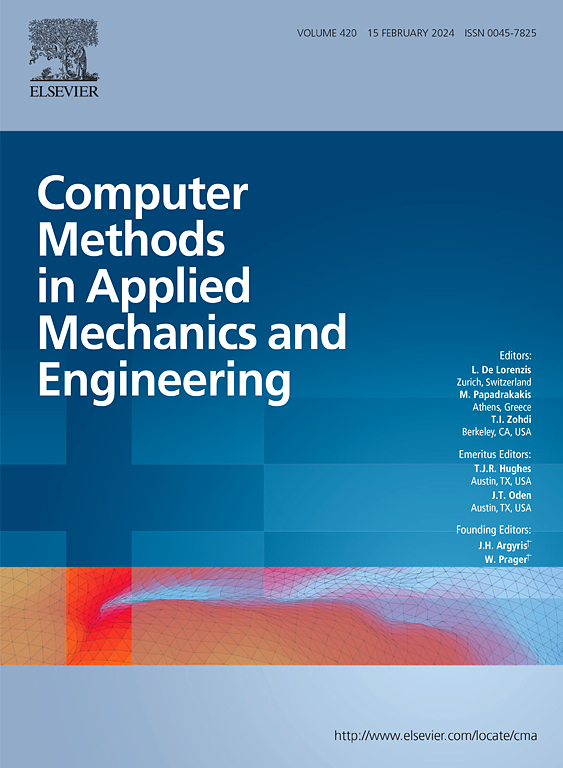脑电生理高阶逼近的p自适应多面体不连续Galerkin方法
IF 7.3
1区 工程技术
Q1 ENGINEERING, MULTIDISCIPLINARY
Computer Methods in Applied Mechanics and Engineering
Pub Date : 2025-08-03
DOI:10.1016/j.cma.2025.118249
引用次数: 0
摘要
多尺度数学模型在计算脑电生理学方面显示出巨大的潜力。然而,他们的实际实施仍然受到大量计算成本的限制,这些计算成本与大脑的快速动态和复杂的几何形状有关,这需要非常精细的时空分辨率。在本文中,我们提出了一种新的p-自适应不连续Galerkin方法,结合Crank-Nicolson时间步进,用于由单域方程和Barreto-Cressman离子模型组成的脑电生理模型的数值离散化。提出的p-自适应策略通过动态的、单元的多项式细化和粗化,在后验误差估计的指导下提高局部精度。为了进一步提高计算效率,我们引入了一种新的聚类算法,该算法可以自动动态地识别需要p-自适应更新的网格元素子集。综合数值实验,包括基准测试案例和人类脑干矢状面癫痫发作活动的模拟,证明了该方法能够显著减少全局自由度数量,同时保持解析复杂波前动力学所需的准确性。本文章由计算机程序翻译,如有差异,请以英文原文为准。
A p-adaptive polytopal discontinuous Galerkin method for high-order approximation of brain electrophysiology
Multiscale mathematical models have shown significant potential in computational brain electrophysiology. However, their practical implementation is still limited by the substantial computational costs associated with the brain’s rapid dynamics and complex geometries, which require exceedingly fine spatio-temporal resolution. In this paper, we propose a novel -adaptive discontinuous Galerkin method on polytopal grids (PolyDG) coupled with Crank–Nicolson time stepping for the numerical discretization of a brain electrophysiology model consisting of the monodomain equation coupled with the Barreto–Cressman ionic model. The proposed -adaptive strategy enhances local accuracy through dynamic, element-wise polynomial refinement and coarsening, guided by a-posteriori error estimators. To further enhance computational efficiency, we introduce a novel clustering algorithm that automatically and dynamically identifies the subset of mesh elements where -adaptive updates are required. Comprehensive numerical experiments, including benchmark test cases and simulations of epileptic seizure activity in a sagittal section of the human brainstem, demonstrate the method’s ability to significantly reduce the global number of degrees of freedom while maintaining the accuracy necessary to resolve complex wavefront dynamics.
求助全文
通过发布文献求助,成功后即可免费获取论文全文。
去求助
来源期刊
CiteScore
12.70
自引率
15.30%
发文量
719
审稿时长
44 days
期刊介绍:
Computer Methods in Applied Mechanics and Engineering stands as a cornerstone in the realm of computational science and engineering. With a history spanning over five decades, the journal has been a key platform for disseminating papers on advanced mathematical modeling and numerical solutions. Interdisciplinary in nature, these contributions encompass mechanics, mathematics, computer science, and various scientific disciplines. The journal welcomes a broad range of computational methods addressing the simulation, analysis, and design of complex physical problems, making it a vital resource for researchers in the field.

 求助内容:
求助内容: 应助结果提醒方式:
应助结果提醒方式:


